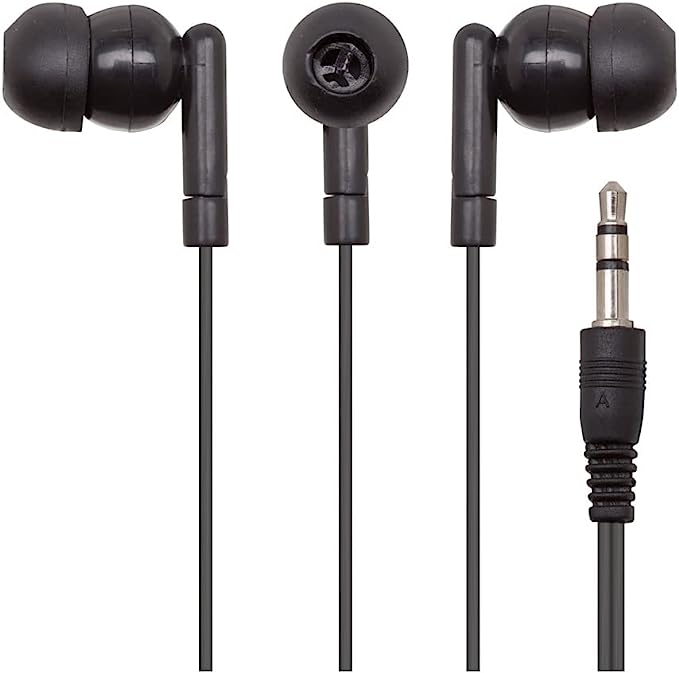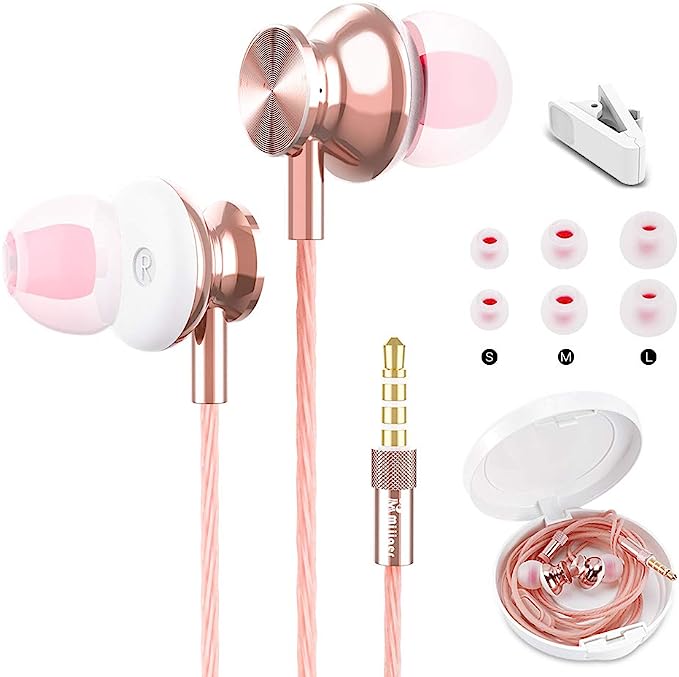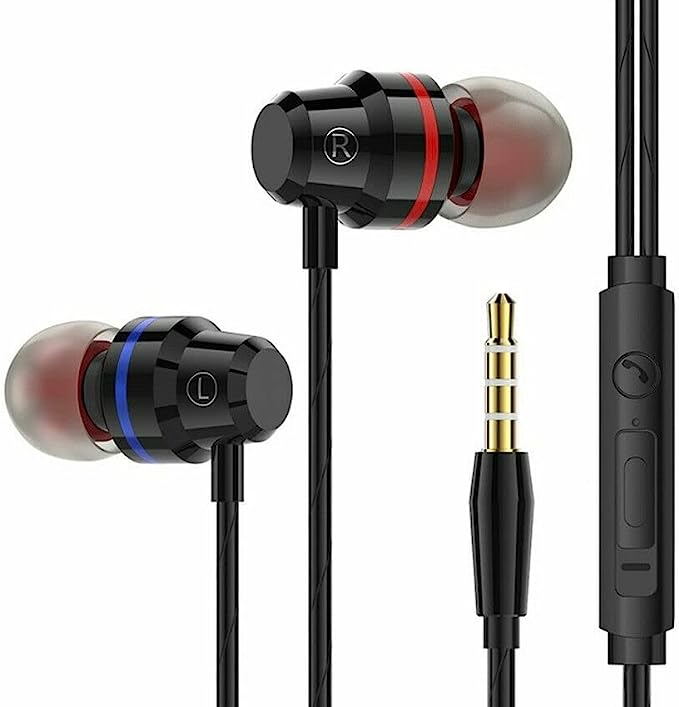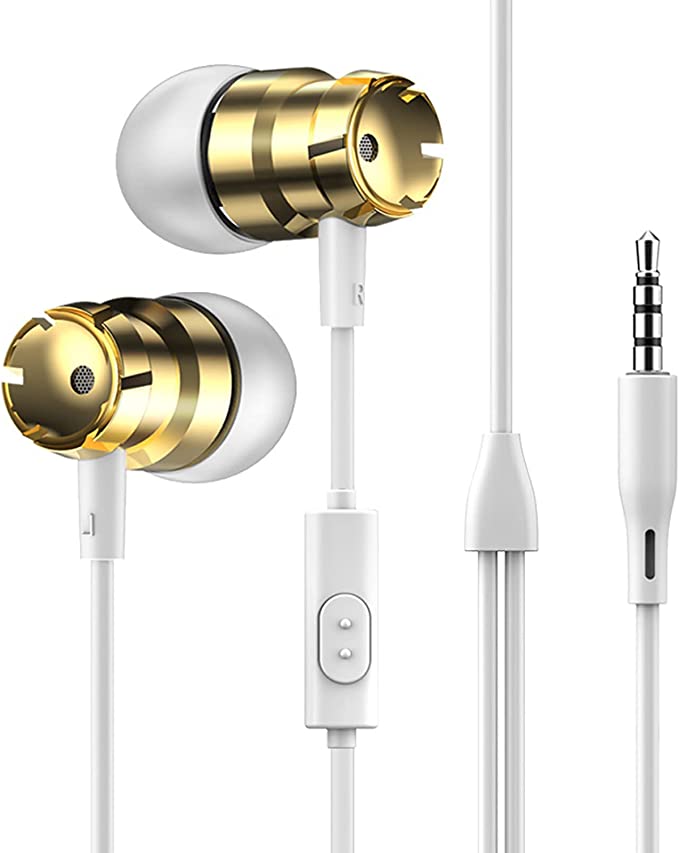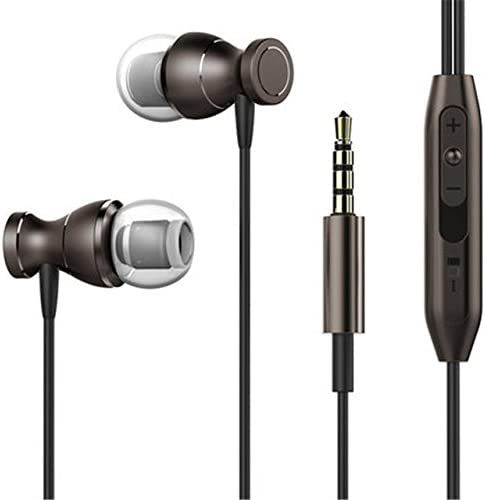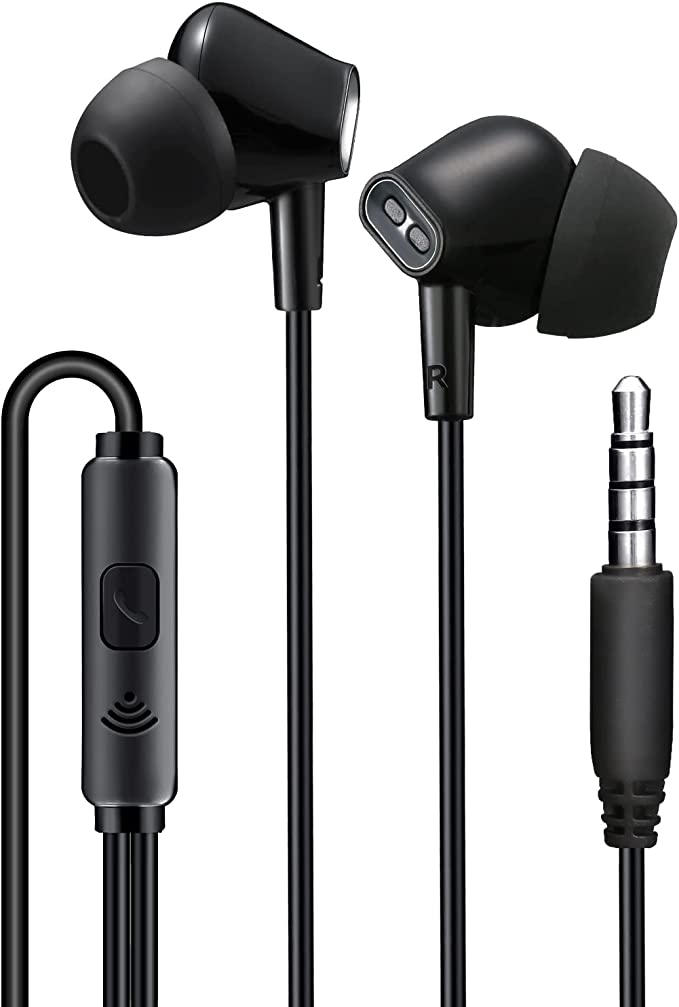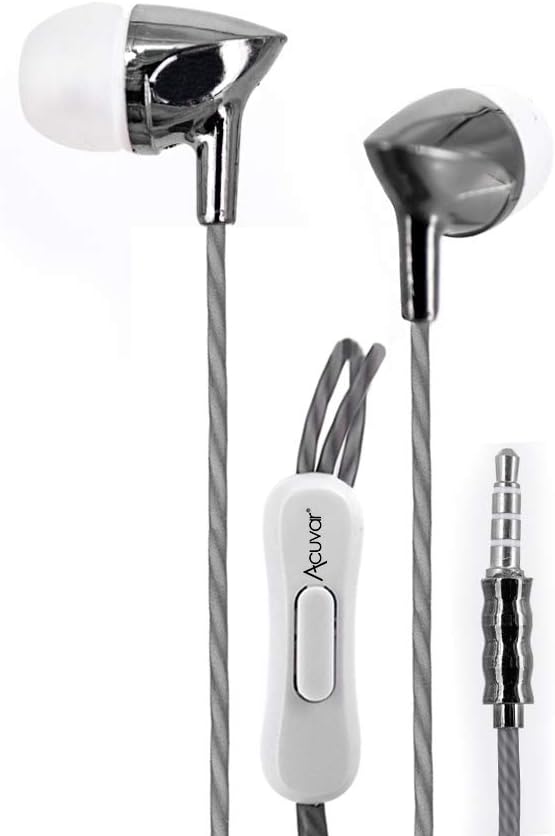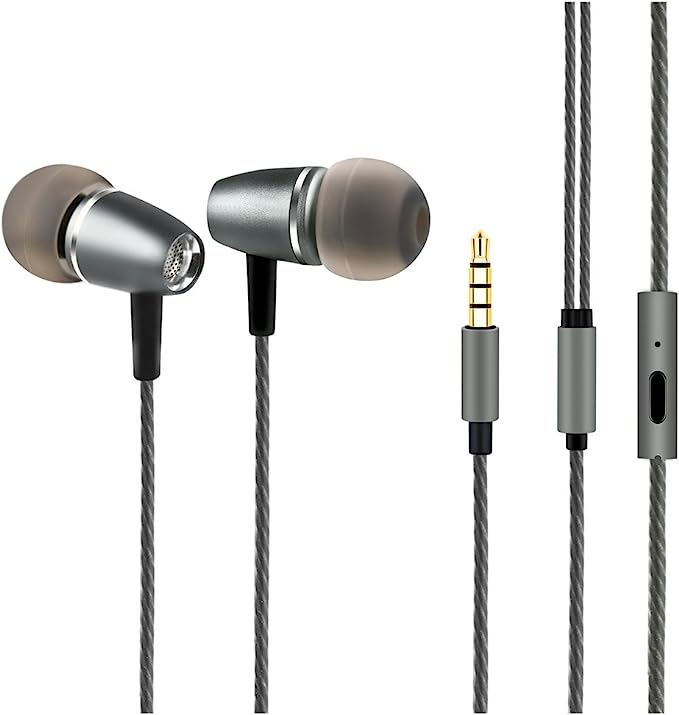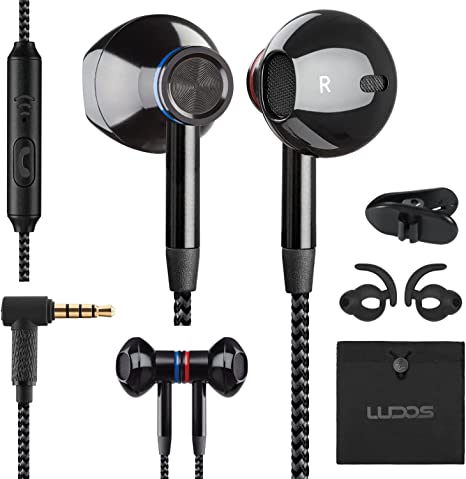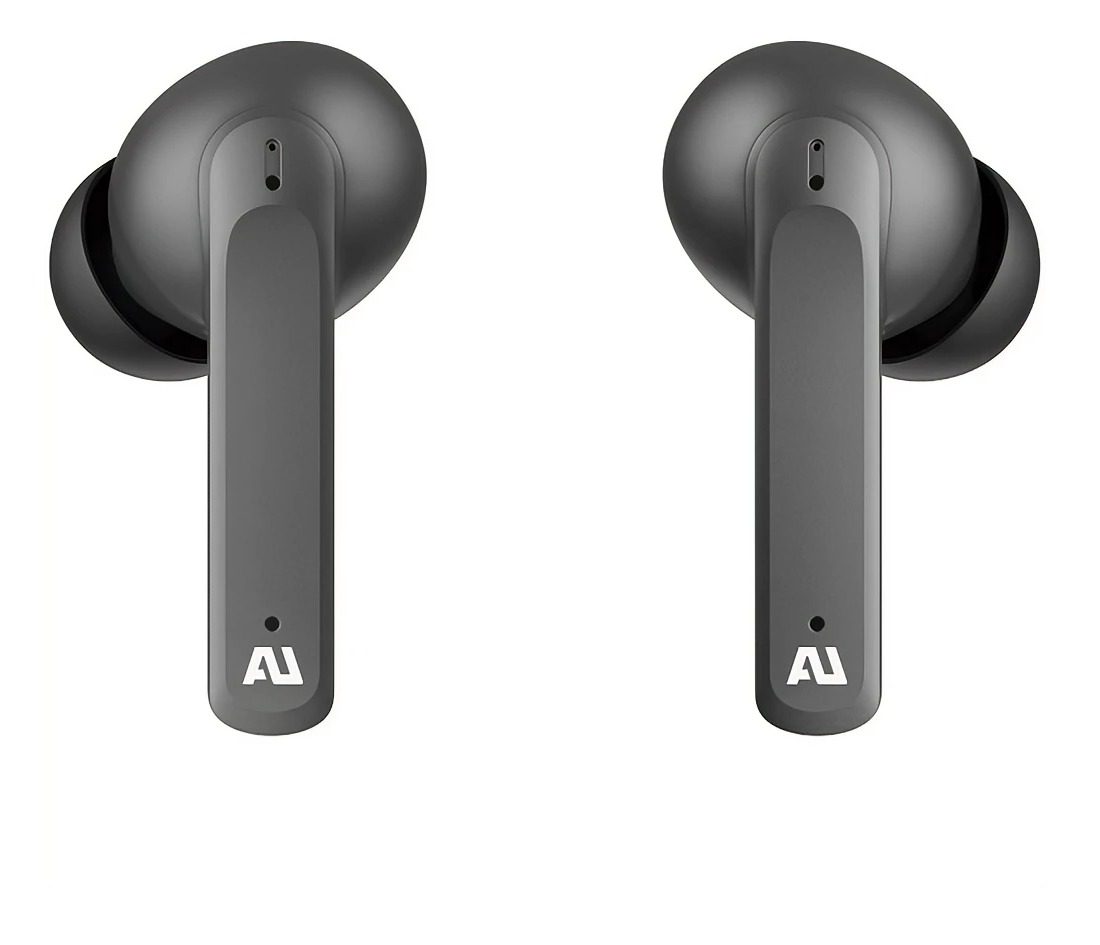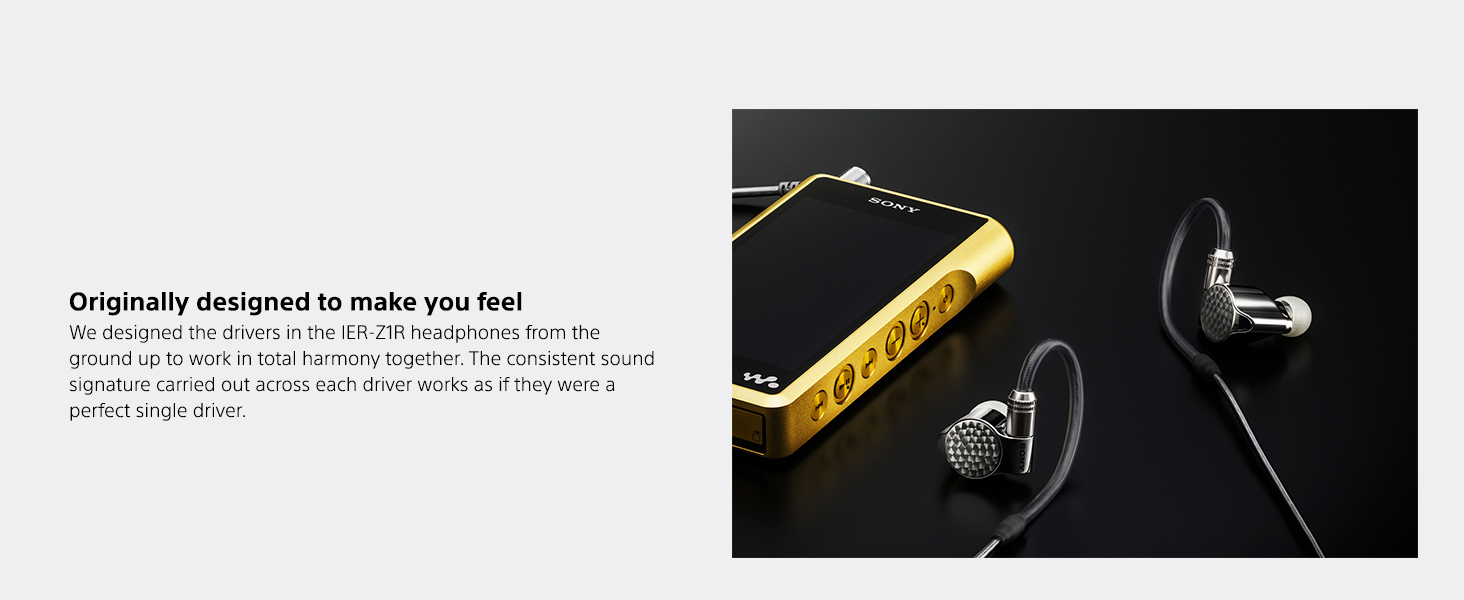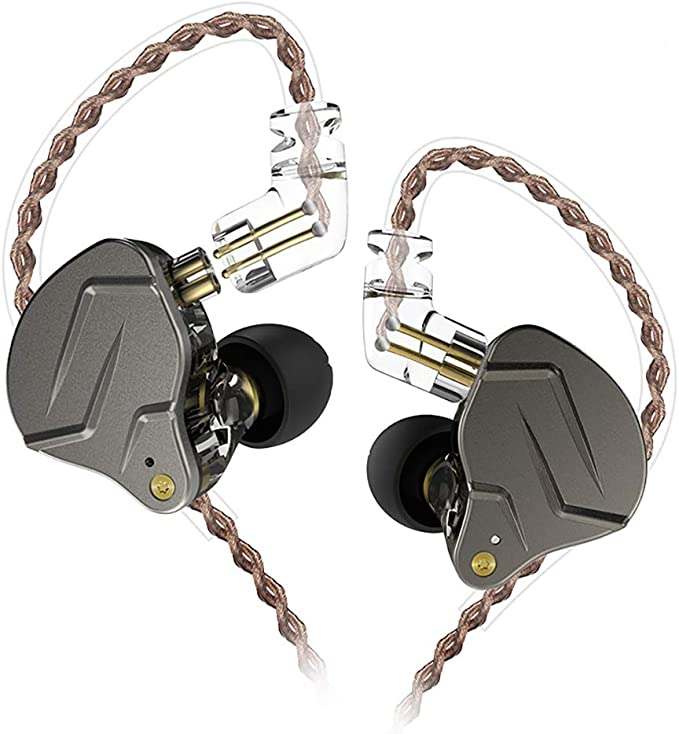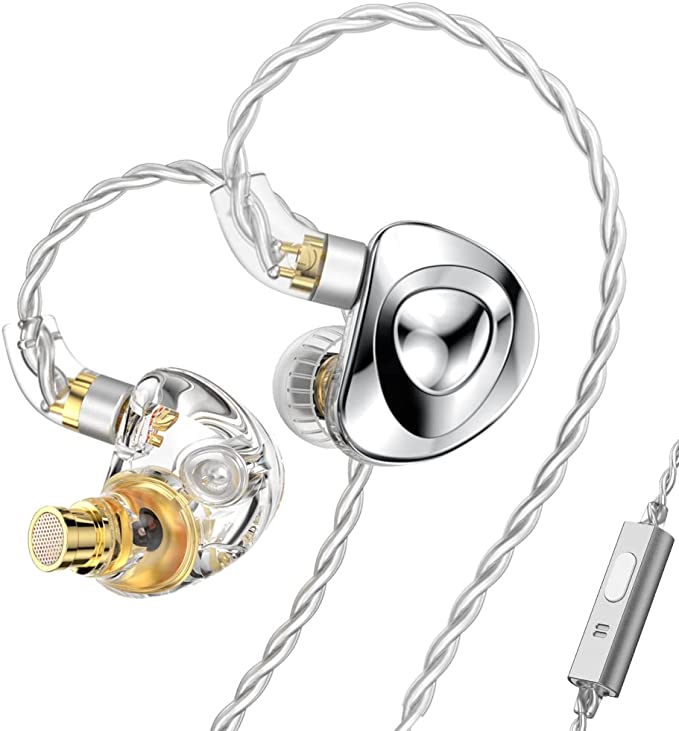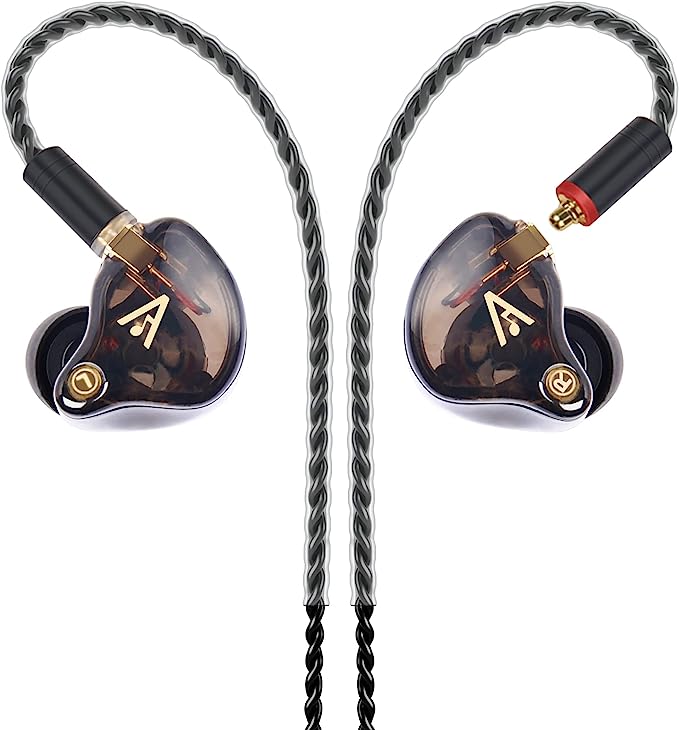Maxell 190300 Earbuds: The Science Behind Simple, Wired Audio
Update on April 13, 2025, 6:08 p.m.
In a world saturated with Bluetooth signals, wireless charging pads, and ever-more complex gadgets, there’s a certain quiet rebellion in plugging in a simple pair of wired earbuds. No pairing rituals, no battery anxiety, just a direct, reliable connection to your sound. The Maxell 190300 In-Ear Wired Earbuds, often found at an astonishingly accessible price point, might seem like relics from a bygone era. But look closer, and you’ll find they are a fascinating microcosm of fundamental audio science – principles that underpin even the most sophisticated sound systems. Let’s unplug the complexity and explore the surprisingly clever engineering packed into this unassuming audio tool. This isn’t just about one model; it’s about understanding the bedrock technology that brings music and voices to our ears every day.

The Bubble of Calm: Getting Intimate with In-Ear Isolation
One of the first things you notice about the Maxell 190300, and many earbuds like them, is their in-ear design. Unlike older styles that merely rested against the outer ear, these are meant to nestle snugly within the ear canal itself. This isn’t just about keeping them from falling out; it’s about harnessing a basic principle of physics for a better listening experience: passive noise isolation.
Think of it like gently cupping your hands over your ears in a noisy room. You immediately notice the outside world fade slightly. In-ear earbuds achieve a similar, albeit more targeted, effect by creating a physical seal. The soft silicone eartips (Maxell includes three sizes, acknowledging that ear canals are far from uniform) act like tiny, custom-fit earplugs. They form a barrier that physically obstructs external sound waves, particularly those in the mid to high-frequency range – think the chatter of voices, the clatter of keyboards, or the general hum of a city street.
It’s crucial to distinguish this from active noise cancellation (ANC), a more complex technology found in pricier headphones that uses microphones and electronics to generate anti-sound waves to cancel out ambient noise. Passive isolation is simpler, relying purely on the physical seal. Its effectiveness hinges almost entirely on achieving a good fit. A poor seal means sound leaks in, diminishing the isolation effect and often impacting the perceived bass response as well. This is why those extra eartip sizes aren’t just a bonus; they’re essential for unlocking the potential of the in-ear design, allowing you to create your personal “bubble of calm.” The real value? You can often listen comfortably at lower volumes, protecting your hearing while still enjoying your audio clearly, whether you’re studying in a bustling library or commuting on a noisy train.

The Engine Room: Unpacking the Dynamic Driver and its Magnetic Heart
Deep within each earbud lies the component responsible for turning electrical signals into the sound waves we perceive: the driver. The Maxell 190300 employs dynamic drivers, the most common type found in headphones and speakers across all price ranges. At its core, a dynamic driver is a marvel of miniature electromagnetism.
Imagine a tiny piston engine, but powered by electricity and magnetism instead of combustion. An electrical audio signal, carrying the fluctuations of music or voice, flows through a very fine coil of wire (the “voice coil”). This coil is attached to a small, thin diaphragm (the “piston” that moves air) and is suspended within a strong magnetic field created by a permanent magnet. As the electrical current in the voice coil rapidly changes direction and intensity (following the audio signal), it interacts with the fixed magnetic field. This generates a fluctuating electromagnetic force, pushing and pulling the voice coil – and the attached diaphragm – back and forth at incredible speed. These vibrations displace the air, creating the pressure waves we perceive as sound.
Now, the specification mentions Neodymium magnets. Why is this specific material highlighted? Neodymium is a rare-earth element renowned for producing exceptionally powerful magnetic fields relative to its size and weight compared to older, more common ferrite magnets. In a driver, a stronger magnetic field allows for more precise control over the voice coil’s movement and potentially higher efficiency. This means the driver can respond more accurately to the electrical signal and produce sound using less power. For designers aiming for small, lightweight earbuds like the 190300, neodymium magnets offer a significant advantage, enabling the creation of compact drivers that can still deliver adequate sound output. Of course, the quality of the driver involves much more than just the magnet type – the diaphragm material, coil winding, and overall construction play huge roles, especially when operating within tight budget constraints. However, the use of neodymium points to an understanding of fundamental driver design principles aimed at efficiency in a small package.

Speaking the Right Electrical Language: The 16 Ohm Question
Flip over the spec sheet (or scroll down the product page), and you’ll likely encounter the term Impedance: 16 Ohms (Ω). This number might seem technical and obscure, but it holds a crucial key to understanding why these earbuds play nicely with your phone or laptop.
In simple terms, impedance is a measure of how much a device “resists” the flow of an electrical alternating current (like an audio signal) at a given frequency. Think of it like the width of a water pipe: a wider pipe (lower impedance) allows water (electrical current) to flow more easily with less pressure (voltage), while a narrower pipe (higher impedance) requires more pressure to achieve the same flow rate.
Audio sources, like the amplifier chip inside your smartphone, MP3 player, or computer, have their own output capabilities. These portable devices typically have relatively low-power amplifiers. Earbuds with low impedance, like the 16 Ohms of the Maxell 190300, present less “resistance” to this amplifier. Consequently, the amplifier can easily deliver enough current to make the earbuds produce sound at a satisfactory volume without straining itself.
Conversely, high-impedance headphones (often found in professional studio environments, sometimes ranging from 80 Ohms to 600 Ohms) demand significantly more voltage and power from the amplifier to reach the same volume level. Connecting high-impedance headphones directly to a standard phone output might result in disappointingly quiet sound. They typically require a dedicated, more powerful headphone amplifier.
So, that “16 Ohm” specification is essentially a declaration of compatibility. It signals that these earbuds are designed to be easily “driven” by the vast majority of portable consumer audio devices. You don’t need any special equipment; just plug them in, and they should readily produce adequate volume without unduly taxing your device’s battery. It’s a practical design choice rooted in understanding the ecosystem they’re intended for.
The Trusty Tether: Why the 3.5mm Jack and Wired Connection Endure
In our march towards wireless convenience, the simple, physical wired connection via the venerable 3.5mm audio jack might seem almost archaic. Yet, it offers distinct, science-based advantages that keep it relevant, especially in budget-friendly or performance-critical applications.
First, let’s appreciate the plug itself. The 3.5mm connector (also known as a mini-jack or TRS/TRRS plug) has roots stretching back over half a century to telephone switchboards. Its enduring presence speaks volumes about its simplicity, robustness, and the power of standardization.
The most significant technical advantage of a direct wired connection is its zero latency. The audio signal travels as an analog electrical wave directly through the copper wire from your device to the earbud drivers. There’s no need for the complex digital encoding, wireless transmission (like Bluetooth), receiving, and decoding processes inherent in wireless audio. This means the sound you hear is perfectly synchronized with the video you’re watching or the game you’re playing. For applications where timing is critical, that instantaneous response is invaluable.
Furthermore, the signal path is straightforward. While analog signals can theoretically pick up interference, a well-shielded cable minimizes this. More importantly, there’s no digital compression involved in the transmission itself (unlike many Bluetooth codecs), potentially preserving more of the original audio signal’s fidelity, although the ultimate sound quality is still heavily dependent on the source and the earbuds’ drivers. And, of course, the most obvious benefit: no batteries required in the earbuds themselves. They draw their minuscule power needs directly from the connected device.
Adding to the utility is the in-line microphone and basic remote. These tiny microphones, often employing MEMS (Micro-Electro-Mechanical Systems) or electret condenser technology, efficiently convert your voice’s sound waves into electrical signals for calls or voice commands. The integrated remote button typically offers essential functions like play/pause and answering/ending calls, adding a layer of convenience without significant complexity or cost.
Bridging Science and Sidewalk: Understanding Budget Realities
While we’ve explored the solid scientific principles behind the Maxell 190300’s design, it’s crucial to ground our understanding in the reality of a budget-oriented product. The extremely accessible price point inevitably comes with trade-offs, governed by the fundamental equation of cost versus performance.
The quality of materials, the precision of manufacturing, and the rigor of quality control are all areas where compromises might be made to keep costs down. This can manifest in several ways. For instance, while Neodymium magnets are used, the overall driver assembly might utilize less expensive diaphragm materials or less precise coil winding compared to high-end models. This can impact the nuance, clarity, and frequency range of the sound reproduction.
This also helps explain a common theme observed in user feedback for many budget electronics: inconsistency. Manufacturing tolerances – the acceptable range of variation in dimensions and properties during mass production – tend to be wider for lower-cost items. This means that two pairs of the exact same model might exhibit slight differences in sound signature or even physical feel (perhaps explaining some user comments about varied earbud angles in different batches). It’s not necessarily a defect in a specific unit, but rather a characteristic of producing goods at such a scale and price.
Similarly, durability can be a concern. While the simple wired design avoids complex electronic failure points, the physical stress points – particularly where the cable meets the plug or the earbuds themselves – might use less robust strain relief or materials compared to more expensive options. Careful handling can extend their lifespan, but they may not withstand the rigors of heavy daily abuse as well as premium counterparts.
Therefore, managing expectations is key. The Maxell 190300 isn’t designed to compete with audiophile headphones. Its value lies in delivering core functionality – audible sound, basic communication, reasonable isolation – reliably and affordably, based on sound (pun intended) engineering principles. It’s about providing a functional tool that meets essential needs without breaking the bank.
Conclusion: The Elegance of Simplicity
The Maxell 190300 In-Ear Wired Earbuds, in all their unpretentious simplicity, offer a valuable lesson. They remind us that even the most basic pieces of technology we use daily are built upon fascinating scientific foundations – from the physics of sound isolation and the electromagnetism driving the tiny speakers, to the electrical principles governing impedance and the enduring utility of standardized connections.
They represent a conscious design choice prioritizing reliability, ease of use, and accessibility over feature richness. There’s a certain elegance in this simplicity – a directness that cuts through the complexities of modern tech. Understanding the science behind these earbuds doesn’t just demystify them; it allows for a more informed appreciation of what they can do, what they can’t, and why they still hold a relevant place in our digital lives. They are a testament to the fact that sometimes, the most effective solution is the one that focuses on doing the essentials well, grounded in principles that have stood the test of time. So, the next time you plug in a simple pair of wired earbuds, take a moment to appreciate the quiet ingenuity humming within.

